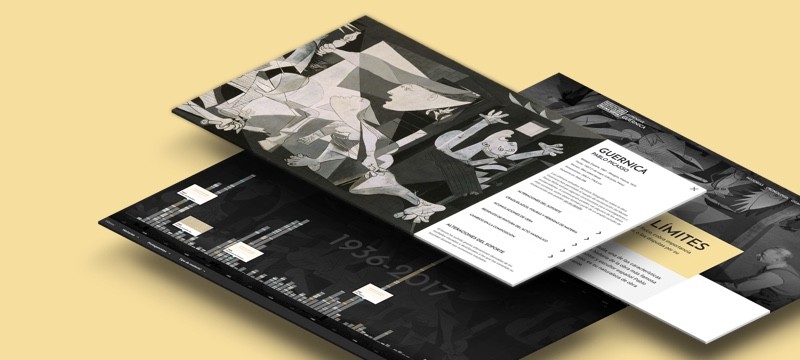Picasso, Palazzo Reale, Milán, October-December 1953
After the opening of the exhibition Picasso at the Galleria Nazionale d’Arte Moderna, Rome, on 3 May 1953, arrangements began for the exhibition in Milan. The aim was twofold: on one hand, to prolong the exhibition on Italian soil and disseminate Picasso’s work, particularly his most recent creations, and on the other, to stress the dual role of the exhibition, politically and culturally, within the specific backdrop of Milan, due to both the significance of the artist and the desire of the city to put itself forward as a nerve centre of modern art and cultural renewal in Italy. The exhibition had a different curator, its own catalogue and an increased number of works on view, with Guernica the linchpin, and featured a broad-ranging ensemble of works from the then Museum of Modern Art, Moscow.
In the political context of European nations’ material, political, economic and cultural reconstruction after the war, the demonstrations and international events for peace and in protest against the atomic bomb pulsed with significance. From 1949, the year Pablo Picasso signed and donated his dove drawing, which would become the image for the Movement of Partisans for Peace, affiliated with the Communist Party, the artist was crossing a time of sharper public visibility on a political level. That same year, following the congress in Wroclaw (Poland), a meeting of the Peace Council was held in Rome and was attended by Picasso; his ties to the Italian Communist Party were thus consolidated and the visit gave rise to the proposal of organising an exhibition of his work in Italy.
On 3 May 1953, the show was unveiled in the Italian capital. Its Organising Committee comprised distinguished art historians such as Giulio Carlo Argan and Lionello Venturi, and politicians such as the senator Eugenio Reale, who served as a spokesperson with Picasso regarding the exhibition’s organisation. From the time it opened its doors, the Rome show, official in its mise en scène and moderate in the political slant of the works and discourse — for fear of its impact on public opinion— set up a committee from Milan to take the exhibition there. The committee, led by Fernanda Witttgens, director of the Pinacoteca Brera, was clear on the objectives required for the public and cultural success it sought: the exhibition must place Milan at the epicentre of Italian intellectual and artistic renewal and must stand apart from the Rome exhibition, primarily in its curatorial approach and the works on display. Therefore, in addition to Eugenio Reale, Attilio Rossi played an integral part in Picasso’s visit in September 1953 and managed to gain his consent to loan Guernica, at that time on loan at New York’s Museum of Modern Art.
The painting was slotted into the show in 5 October, almost three weeks after its opening, and departed before the exhibition ended, on 14 November, to be sent to Brazil, where it was due to become part of the retrospective on the artist inside the framework of the Second São Paulo Biennial. In December, it joined the ensemble of works from the 1900s and 1910s, which were sent from the Museum of Modern Art in Moscow, thereby turning the Milan exhibition into something akin to an anthology on the artist. One of the reasons behind Picasso agreeing to loan the picture was the place chosen to display it: the Hall of Caryatids at the Palazzo Reale in Milan, a striking, Neo-Classical space whose half-crumbling appearance attested to the bombings of the city in 1943. The first time it was displayed alongside Picasso’s politically committed, anti-war pieces The Charnel House (1944-1945), Massacre in Korea (1951), and the recently finished murals War and Peace (1953), Guernica found the perfect stage, reaffirming its iconic nature as a symbol of destruction, war and death. The presence of Guernica and this significant group of paintings denoted an act of redemption, not devoid of tension, for the artists and intellectuals brought together by the Milanese anti-fascist magazine Corrente, published from 1938 and continuing on into the war years, and which included the participation of figures such as Carlo Carrà, Mario Mafai and Renato Gutusso. In Picasso they saw a master of avant-garde art and a politically committed artist.




